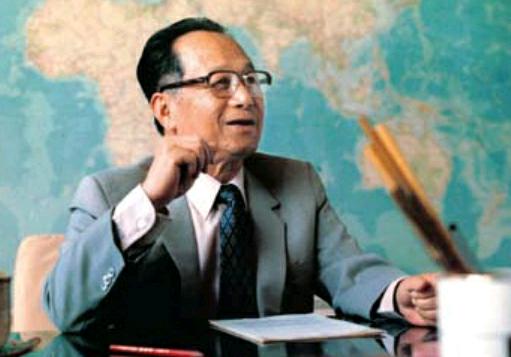Gu Mu: The SEZ Architect
by+Xu+Shuyuan
A key member of the team propelling Chinas great campaign of economic reform and opening-up, Gu Mu became a legendary pioneer driving many of the countrys big steps forward: His first overseas investigation report cemented the central governments determination to open the countrys door to the outside world. He helped introduce the first foreign loan for the economic reform and opening-up. And his coordination efforts resulted in pilot special economic zones(SEZs) in China.
Well-known Chinese writer Gao Xiaolin interviewed many of the people involved in economic reform and opening-up, and noted that everyone mentioned Gu Mu when talking about SEZs. “He is hailed as ‘chief architect of the great project,” remarked Gao.
Professor Ding Xueliang from Hong Kong University of Science and Technology believes that over the past three decades,“opening-up” has played a more important role because it has led China to understanding and being understood.
In 1978, Gu Mu, then vice premier of the State Council, led an economic delegation to visit five Western European countries: France, Switzerland, Belgium, Denmark, and the then Federal Republic of Germany – the first time the Chinese government had ever officially dispatched representatives to Western countries since the founding of New China in 1949.
Vice Premier Gu made a report to the Political Bureau of the Central Committee of the Communist Party of China (CPC) after returning. “Everybody assumes that capitalism is on the verge of collapse,” he illustrated, “But Ive seen a developing, galloping economy in post-war Europe. I saw many practices worth studying, learning, and adopting.”
Xi Zhongxun, then secretary of the Guangdong Provincial Committee of the CPC, inquired what kind of steps his province should take in leading others. “Big ones, of course, as assigned by the central government,” replied the vice premier.
Soon after Deng Xiaoping defined “special economic zone,”decision makers in Guangdong and Fujian provinces began feasibility study of construction of the SEZs.
In 1979, the central government and the State Council approved Guangdong and Fujian with “special policies and flexible measures” for the establishment of four SEZs in the cities of Shenzhen, Zhuhai, Shantou, and Xiamen, kicking off the effort of opening to the outside world through economic reform.
After more than 20 days of investigating and surveying the two provinces, Gu Mu outlined policies for SEZs with priority placed on provincial economic planning and more decision-making power given to the two provinces, aiming to separate incoming and outgoing flows fiscally, leave more new earnings to local governments and grant certain regions in the four SEZs a preferential tax rate to draw foreign investment and stimulate the production of goods for export.
That same year, Gu Mu went to Japan and secured the first loan from a foreign government since the implementation of the reform and opening-up policies, leading the way to more big-ticket foreign funds. Before long, Gu was leading the office of the State Import & Export Regulatory Commission in drafting the Law of the Peoples Republic of China on Chinese-Foreign Equity Joint Ventures, the first of its kind in the country.
“Gu Mu starred as both one of the top decision makers and a participant in the establishment of Chinas SEZs,” recalls Zhang Shoude, Gus former secretary.
In 1988, as his years advanced, Gu Mu retired from his post in the State Council. “Im full of confidence I will see the development of export-oriented economy in Chinas coastal areas,” declared Gu Mu at his final meeting on opening-up work in coastal regions.
China Pictorial2015年10期
